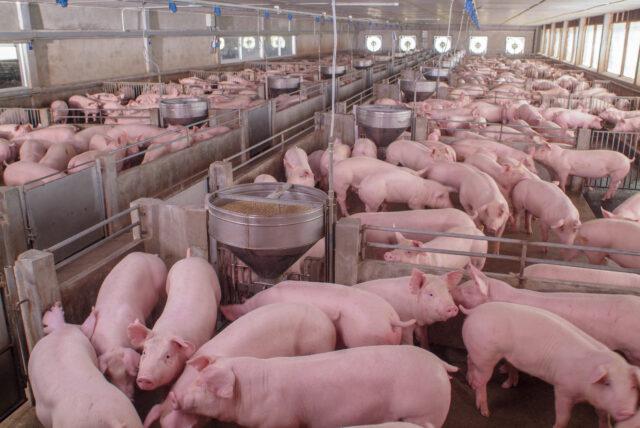Porto Alegre, June 15, 2023 – The first semester is coming to an end, and the scenario remains difficult for Brazilian pig farming, with weak prices for both live pigs and carcass. However, there are two positive factors at the moment: the strong pace of pork exports and the decline in the cost of animal nutrition. As for the cost, the scenario is more favorable due to the inversion of the cycle of the main feedstuff components. The Brazilian soybean crop was excellent, and there is the outlook for a large corn second crop entering the market in the second half of the year and good soybean and corn crops in the United States, barring a good climate evolution over the next few weeks.
Brazilian pork exports show a strong performance in this first semester but not enough to create a favorable environment for prices along the chain, that is, there is still great pork availability in the Brazilian market. Brazilian pork production is high, and adjustments are necessary for the market to find a balance point. Domestic demand is still unstable, a scenario that tends to last in the coming few weeks, considering that chicken and beef cuts are negatively biased, also suffering from oversupply. It is worth noting that pork occupies the third place in the preference of Brazilians, and this scenario of generalized surplus supply tends to suffer with the choice of consumers at the final end.
In the month, Brazil exported 99.459 thousand tons (fresh + industrialized), with an average price per ton of USD 2,502.08 and total revenue of USD 248.855 mln. The price per ton is the first highlight, reaching the highest level of the year, driven by the increase in prices paid by China, Hong Kong, Singapore, Chile, and the Philippines. The second point that draws attention is that China is acting in a more cautious way toward imports, and even so monthly results are coming strong. Brazil has been able to diversify shipments and open new markets, which is positive and can mitigate any future risk.
China is still the biggest importer, with 32.976 thousand tons in May, accounting for 33.16% of the volume. However, the country already acts more timidly in purchases, which is natural, as the Chinese market has been in crisis, relying on pork oversupply. May had the second-lowest volume shipped to China in the last 12 months.
A point worth noting is that the Chinese currency is currently undergoing a devaluation process, surpassing 7.10 yuan per dollar, a factor that makes imports more expensive and could lead the country to act more harshly in purchases over the coming few weeks.
The second-largest importer in May was the Philippines, with 9.486 thousand tons, corresponding to a share of 9.54%. The country still has a supply deficit caused by African swine fever, and the recovery of production is slower compared to China, for example, considering the country’s lower financial power. Throughout the semester, the Philippines are advancing both in terms of volume and price paid per ton. In March, the average price paid by the country was USD 2,305.88, against USD 2,648.35 registered in May, an increase of 14.85%.
The third-largest importer in May was Hong Kong, with 8.810 thousand tons and a share of 8.86%, and the fourth place was Chile, with 6.896 thousand tons and a share of 6.93%.
With the May data, the volume of pork exported by Brazil totaled 472.0 thousand tons in the first 5 months of 2023, an increase of 16.13% over the 406.5 thousand tons registered in the same period last year. Revenue up to May hit USD 1.138 bln, an increase of 29.17% over the USD 881.041 mln registered in the same period last year.
Follow the Safras Agency on our website. Also follow us on our Instagram and Twitter and stay on top of the main agribusiness news!
Copyright 2023 – Grupo CMA

